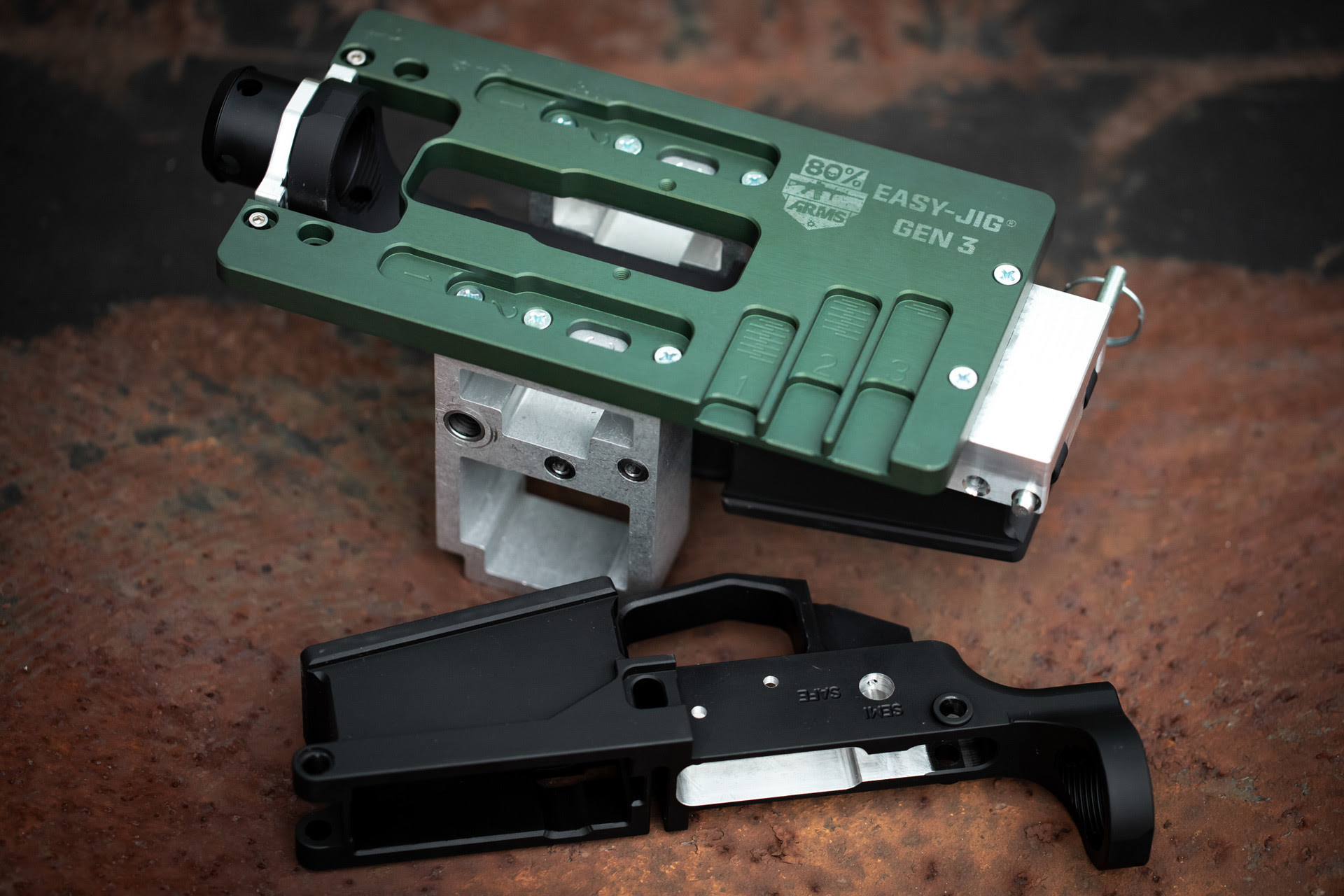Most Hidden Secrets About 80% Lowers
The stripped lower receiver is where you always start when building an AR-15.
This is because since it is the regulated firearm part of the overall rifle or pistol, that is why it is allowed. The Bureau of Alcohol, Tobacco, and Firearms (ATF) does not regulate, serialize, or control any of the additional components that you need to make an AR.

What's an 80% lower, then, if the legally-owned firearm is the stripped lower of an AR?
- Make a pinhole with the hammer.
- Drill a pinhole in the trigger.
- Drill a hole for the safety selector lever.
- Automate the cavity of the firing control group.
As the name indicates, the 80% lower has some parts that have already been machined and drilled. Among these parts are the:
- Bolt catch
- Pistol grip hole
- Magazine well
- Magazine release
- Buffer detent hole
- Trigger guard pinholes
- Upper receiver rear lug pocket
- Front and rear take-down holes
- Buffer tube threads and housing
Drilling the pin holes and finishing the cavity will make your 80% lower ready for assembly. You can Purchase All The Parts Together In A Lower Parts Kit and Buffer Tube Kit.
The ATF's Opinion About 80% Lowers
Officially, the ATF does not recognize the term "80% lower." However, unfinished lowers are legally classified by the agency as receiver blanks. According to the ATF, a receiver blank that doesn't fit the definition of a firearm is exactly that—a blank. A serial number is not required if an 80% lower is not regarded as a firearm. Neither an FFL nor a background check are necessary in order to purchase one.
Regarding the lower receiver of the AR, the ATF even offers some images to define what it views as a firearm (80% lower) and what it deems to be a receiver blank
Types of 80% Lowers
The most common type of 80% lower receiver is made for the AR-15, like the Forged And Anodized Lower pictured in this guide, up above. It is an unfinished version of the AR's stripped lower receiver. These lowers work with 5.56 and .223 magazines and uppers, as well as some other calibers, like 300 Blackout and 6.5 Grendel.
Larger .308-type 80% lowers also exist for the AR-10 / LR-308 rifle platform, which can also chamber 6.5 Creedmoor. And lastly, 80% frames exist for certain handgun platforms, like the 1911, Sig P320, and GLOCK.
Some states have banned 80% lowers
- California (AB 1621)
- Connecticut (Public Act No. 19-6)
- Delaware (H.B. 125 - 2021)
- District of Columbia (D.C. Law 23-125)
- Hawaii (H.B. No. 1733)
- Illinois (H.B. 4383)
- New Jersey (NJ Rev Stat § 2C:39-9 (2013))
- New York (Senate Bill S14A)
- Rhode Island (Senate Bill 2004)
- Washington (H.B. 1739 - 2019-20)

Q: Do I need to visit an FFL or fill out a Form 4473 to buy an 80% lower?
A. Nope. Since 80% lowers are categorized as receiver blanks, FFLs are not needed to sell or distribute them. Purchasing one does not require a 4473. With no serial number, this form could not be filled out for a receiver blank in any case.
Q: Are 80% lowers legal under federal law?
A. Sure. It's a fallacy that receiver blanks are prohibited by federal law. That is untrue. Similar to how only some states forbid automatic knives, only certain states forbid 80% lowers; however, state laws, not federal law, control this.
The Gun Control Act of 1968 expressly permits the manufacturing of an unlicensed handgun for personal use at home without the need for an FFL or other authorization.
Q: Are 80% lowers illegal in the US?
A: Is buying a receiver that is 80% lower legal? Sure. An 80% lower receiver is nevertheless permissible to buy for personal use. Private gun manufacturing is still protected at the federal level as long as you don't plan to professionally sell the weapons, which calls for a Federal Firearms License (FFL).
Q: What is the final rule of the ATF?Q: Are 80% lowers different from factory-made receivers?
A. An 80% lower, once manufactured, is form- and function- identical to the matching "retail-bought" receiver or frame on its platform. This guarantees that readily available parts may be fitted and that the gun can be modified with widely used components.
Q: What else do I need to assemble my receiver blank?
A: A receiver blank can be purchased independently of the other components needed to assemble a handgun. You will also require the upper components in addition to the buffer system and lower parts package.



Comments
Post a Comment